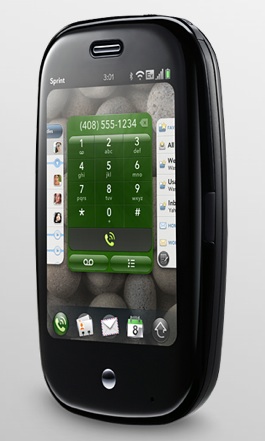Palm Pre: Our Thoughts
The Net-reliant smartphone market is on the verge of exploding for the masses, and the Palm Pre could be the best device yet.
While BlackBerry, Windows Mobile and S60 users have been rocking data-enabled devices for quite some time now, no phone really made the use of Internet connectivity as well as the iPhone did since its launch in 2007 to present day. Sure, the G1 with Google’s Android joins the race, but when it comes to touch-screen “Netphones,” Apple’s still the champ.
Palm, long considered by many--including us--to be out of the picture against the likes of the iPhone. That perception was quickly crushed following Palm’s presentation of its new phone, dubbed the Pre, which in our minds is a front runner to be the best smartphone of the year. And it’s only January.
The Palm’s new thing isn’t just a new handset, it’s a completely new operating system that we expect to revitalize the company’s product line. It all starts with the Pre hardware, which incorporates the best parts of the G1 and the iPhone.
For starters, the main display is half-VGA resolution, with a portrait orientation. The touch-screen supports multi-touch, and like the iPhone, there is just one button on the front to go “home.” The touch sensitive part of the phone also extends below the screen to around the home button area, which is a place for gestures that serve for navigation. For example, users can swipe the bottom area from right to left as a “go back” function.
Scoffing at the subjective inadequacy of the virtual keyboards, Palm revealed a slide out QWERTY keyboard at the bottom of the display. Unlike the G1, which has a keyboard slide out in landscape mode, forcing text entry in applications to reorient, the Pre will retain the usual portrait view used for most programs. The downside is that the individual QWERTY keys are smaller, but keys have never been large on the Palm Treo phones.
The real treat about the Palm Pre is its software, which is called WebOS. It’s painfully obvious that Palm took many, many pages out from Apple’s playbook. Even small touches in the interface, such as how pages “bounce” when scrolled to an end, remind us of the iPhone. That said, it’s wise to adopt what works and what users are already used to rather than reinventing the wheel.
Get Tom's Hardware's best news and in-depth reviews, straight to your inbox.
Besides just being a convergence mobile device, Palm kept pushing “synergy” as a big concept in its software. Rather than just link to one online source, like the G1 does understandably with Google Account, WebOS looks to an array of sources to compile one cohesive contact list, calendar and others. This includes instant messaging contacts, Facebook friends, and of course, from your address book.
One thing that iPhone users don’t have right now is multitasking, or even integration between first party applications. WebOS deals with multitasking in an elegant and simple manner with a “cards” interface. Rather than have the main screen cluttered with application icons, WebOS keeps a blank desktop for application use and switching. Palm’s approach does keep the “dock” of essentials at the bottom though, because it works well. While one can navigate through menus to find an application, just pressing typing into a keyboard will automatically find an application. For example, typing in “blu” will bring up the Bluetooth icon for selection, if that is indeed what you were looking for (Mac OS X users may also use Finder in a similar fashion). Palm says this is the fastest way to access functions of the Pre.
Applications will launch full screen, but then a press of the home button will zoom out and users will be able to see the application set next to other windows. This is reminds us of how window switching works in Safari on the iPhone. Speaking of web browsing, WebOS uses Webkit just like Android and Safari.
The last “one more thing” Palm had at the keynote was the charger for the Pre. Rather than having to deal with cables or docks, the Pre has a round, black circular stand that’ll magnetically hold the device in place while charging. That’s right, wireless induction charging.
Now for availability, CDMA users no longer need to be jealous of those with the iPhone on AT&T and the G1 on T-Mobile. The Palm Pre’s first iteration will be an EV-DO phone, and will launch exclusively on the Sprint network in the 1H 2009. This does make those of us who love GSM sad, but we’re keeping our fingers crossed for a SIM-supporting version before long.
Pricing hasn’t been announced, but we expect that it’ll be priced along the same lines as the subsidized iPhone 3G and G1 at under $200.
From a software and hardware standpoint, Palm appears to have really hit one out of the park with the Pre and WebOS.


